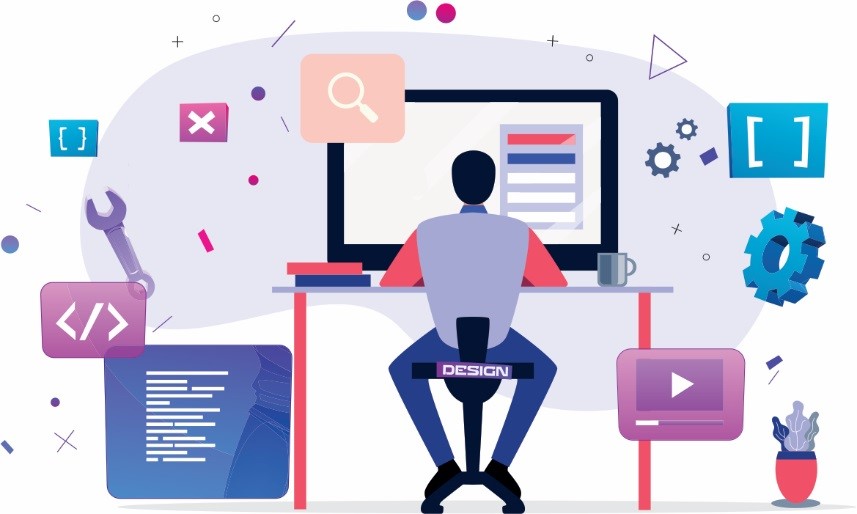Why Selecting the Right Software Development Partner Can Change Your Project
Why Selecting the Right Software Development Partner Can Change Your Project
Blog Article
Committed Developers vs. In-House Teams: Which Is Right for You?
The choice in between using devoted programmers and maintaining an internal group is a significant one that can impact the trajectory of your tasks and overall company method. Devoted developers give a level of adaptability and specific knowledge that can be advantageous for particular, short-term campaigns. On the other hand, in-house teams add to a cohesive firm society and a nuanced understanding of lasting goals. By checking out essential aspects such as budget plan, task scope, and preferred control, you can much better establish which strategy lines up with your organizational requirements. The effects of this choice extend beyond prompt end results-- take into consideration the more comprehensive impact on your service landscape.
Comprehending Committed Designers
The growing need for specialized abilities in the technology market has actually led to the emergence of committed developers as a practical solution for numerous companies. These specialists are normally contracted on a task basis, enabling companies to take advantage of specific expertise without the long-lasting dedication connected with full-time hires. Devoted designers are commonly embedded within a customer's team, giving versatility and scalability to fulfill project demands.
This model enables companies to access a global ability pool, which is especially useful in a quickly advancing technological landscape. Dedicated programmers can be sourced from various geographical places, making certain that firms can find the right ability at competitive rates. They usually bring a wealth of experience and understanding, having actually dealt with diverse jobs throughout different markets.
In addition, specialized developers can focus exclusively on the tasks at hand, improving performance and efficiency. They are geared up to integrate effortlessly right into existing operations, teaming up very closely with in-house groups to attain task objectives. This method not only decreases the burden of employment and training but additionally allows organizations to remain agile, adapting swiftly to transforming market demands and technical improvements.
Advantages of In-House Teams

Furthermore, in-house teams tend to have a deeper understanding of the business's objective, values, and goals. This positioning can improve worker engagement and motivation, as staff member really feel more linked to their work and the organization's success. Furthermore, having a dedicated internal team permits better positioning of methods and objectives, as these members are constantly concentrated on the business's concerns.
Internal teams additionally promote quicker decision-making procedures, as they can respond extra swiftly to changes and obstacles. The established partnerships and experience with business methods permit structured process and reduced miscommunication. Ultimately, the mix of a cohesive culture, positioning with organizational objectives, and effective interaction makes in-house groups a valuable asset for lots of companies, specifically those seeking to cultivate long-term development and innovation.
Cost Considerations
When evaluating cost considerations, both committed designers and internal teams present distinct economic ramifications for organizations. Engaging devoted programmers generally includes a pay-per-project or hourly rate design, which can be affordable for services with fluctuating job demands. This approach permits for flexibility in digital web agency scaling resources up or down, making certain that business only spend for the services they need.
In comparison, internal groups involve fixed costs, consisting of wages, advantages, and overhead expenses such as office and tools. While this design provides higher control and immediate accessibility of resources, it may bring about higher long-lasting expenses, especially if the workload does not warrant a full time content team.
In addition, business ought to think about the hidden costs linked with recruitment and training of in-house employees, which can further stress spending plans. In many cases, the time and sources invested on taking care of an internal team can diminish the company's core business objectives.

Task Administration and Versatility
Job monitoring and versatility are critical variables that influence the option between internal groups and dedicated link developers. Committed groups typically have established processes for taking care of projects successfully, leveraging particular techniques like Agile or Scrum, which facilitate iterative progress and flexibility.

Inevitably, the choice between committed programmers and internal teams rests on the preferred degree of versatility and the specific project administration needs. Companies must assess their operational dynamics, task intricacy, and resource schedule to identify which option straightens ideal with their strategic objectives.
Making the Right Option
Selecting the best growth strategy-- internal groups or specialized designers-- calls for a cautious evaluation of different elements that line up with a company's strategic goals. Conversely, in-house teams can supply much better continuity and assimilation with existing workers.
Following, evaluate your budget plan. Devoted designers typically provide a cost-effective option for short-term tasks, while internal teams may sustain higher long-term costs because of salaries, advantages, and expenses expenses. Examine the level of control and cooperation preferred; internal groups commonly cultivate stronger communication and positioning with company culture.
In addition, think about the time frame. If immediate outcomes are needed, dedicated programmers can be onboarded rapidly, whereas building an internal group takes some time for recruitment and training. Ultimately, evaluate the long-lasting vision of your organization. Spending in an internal group may generate far better returns over time if continual development is vital. Ultimately, the choice pivots on a detailed evaluation of these variables, making sure alignment with your firm's functional needs and general purposes.
Conclusion
Finally, the choice in between committed designers and internal groups hinges on task demands and business purposes. Committed designers provide adaptability and specific proficiency, making them suitable for temporary initiatives. Conversely, internal groups grow a cohesive culture and much deeper alignment with lasting objectives. Careful analysis of budget restraints, project timelines, and wanted control degrees is essential for identifying one of the most ideal approach, guaranteeing alignment with tactical top priorities and operational performance.
The choice between using specialized developers and maintaining an internal team is a substantial one that can affect the trajectory of your tasks and general business method.Task monitoring and versatility are crucial variables that affect the selection in between committed designers and internal groups. hire dedicated developers.In contrast, in-house groups may stand out in preserving a regular job management structure due to their experience with the company's culture and lasting goals. Devoted designers usually provide an affordable option for temporary projects, while internal groups may incur higher long-term expenditures due to salaries, advantages, and overhead prices.In verdict, the choice in between devoted programmers and internal groups hinges on project requirements and business objectives
Report this page